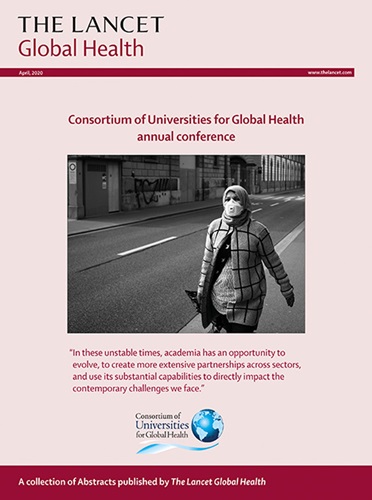评估国家感染预防和控制最低要求:2017-22 年全球横断面调查证据。
IF 19.9
1区 医学
Q1 PUBLIC, ENVIRONMENTAL & OCCUPATIONAL HEALTH
引用次数: 0
摘要
背景世界卫生组织(WHO)感染预防与控制(IPC)最低要求为降低医疗服务过程中的感染风险提供了标准。我们旨在调查这些要求在国家层面的全球实施情况,以及与 2017-18 年相比,2021-22 年期间的实施进展,以确定未来的干预方向。方法邀请各国 IPC 联络点完成一项在线调查,以衡量 2021 年 7 月 19 日至 2022 年 1 月 31 日期间的 IPC 最低要求。主要结果是达到 IPC 最低要求的国家比例。通过贝塔回归评估了与这一结果相关的国家特征。进行了子集分析,将 2021-22 年的指标与 2017-18 年进行的世卫组织 IPC 调查进行比较,并评估达到 IPC 最低要求的国家比例与世卫组织其他指标结果的相关性。106 个国家中有 4 个(4%)达到了 IPC 的所有最低要求。得分最高的 IPC 核心内容是多模式改进策略,得分最低的是 IPC 教育和培训。与低收入国家相比,高收入国家达到 IPC 最低要求的几率更高(调整后的几率比 2-7,95% CI 1-3-5-8;P=0-020)。与 2017-18 年调查相比,报告有积极的国家 IPC 计划(65% 至 82%,p=0-037)和专项预算(26% 至 44%,p=0-037)的国家比例显著增加。与其他调查工具相比,对IPC最低要求的评估显示出较低的正相关性。FUNDINGWHO.TRANSLATIONS有关摘要的法文和西班牙文译文,请参见补充材料部分。本文章由计算机程序翻译,如有差异,请以英文原文为准。
Evaluating national infection prevention and control minimum requirements: evidence from global cross-sectional surveys, 2017-22.
BACKGROUND
WHO infection prevention and control (IPC) minimum requirements provide standards to reduce the risk of infection during health-care delivery. We aimed to investigate the global implementation of these requirements at national levels and the progress of doing so across 2021-22 compared with 2017-18 to identify future directions for interventions.
METHODS
National IPC focal points were invited to complete an online survey measuring IPC minimum requirements from July 19, 2021, to Jan 31, 2022. The primary outcome was the proportion of countries meeting IPC minimum requirements. Country characteristics associated with this outcome were assessed with beta regression. Subset analyses were conducted to compare the 2021-22 indicators with a WHO IPC survey conducted in 2017-18 and to assess the correlation of the proportion of IPC minimum requirements met with the results of other WHO metrics.
FINDINGS
106 countries (ie, 13 low income, 27 lower-middle income, 33 upper-middle income, and 33 high income) participated in the survey (56% response rate). Four (4%) of 106 met all IPC minimum requirements. The highest scoring IPC core component was multimodal improvement strategies and the lowest was IPC education and training. The odds of meeting IPC minimum requirements was higher among high-income countries compared with low-income countries (adjusted odds ratio 2·7, 95% CI 1·3-5·8; p=0·020). Compared with the 2017-18 survey, there was a significant increase in the proportion of countries reporting an active national IPC programme (65% to 82%, p=0·037) and a dedicated budget (26% to 44%, p=0·037). Evaluation of the IPC minimum requirements compared with other survey instruments revealed a low positive correlation.
INTERPRETATION
To build resilient health systems capable of withstanding future health threats, urgently scaling up adherence to WHO IPC minimum requirements is essential.
FUNDING
WHO.
TRANSLATIONS
For the French and Spanish translations of the abstract see Supplementary Materials section.
求助全文
通过发布文献求助,成功后即可免费获取论文全文。
去求助
来源期刊

Lancet Global Health
PUBLIC, ENVIRONMENTAL & OCCUPATIONAL HEALTH-
CiteScore
44.10
自引率
1.20%
发文量
763
审稿时长
10 weeks
期刊介绍:
The Lancet Global Health is an online publication that releases monthly open access (subscription-free) issues.Each issue includes original research, commentary, and correspondence.In addition to this, the publication also provides regular blog posts.
The main focus of The Lancet Global Health is on disadvantaged populations, which can include both entire economic regions and marginalized groups within prosperous nations.The publication prefers to cover topics related to reproductive, maternal, neonatal, child, and adolescent health; infectious diseases (including neglected tropical diseases); non-communicable diseases; mental health; the global health workforce; health systems; surgery; and health policy.
 求助内容:
求助内容: 应助结果提醒方式:
应助结果提醒方式:


